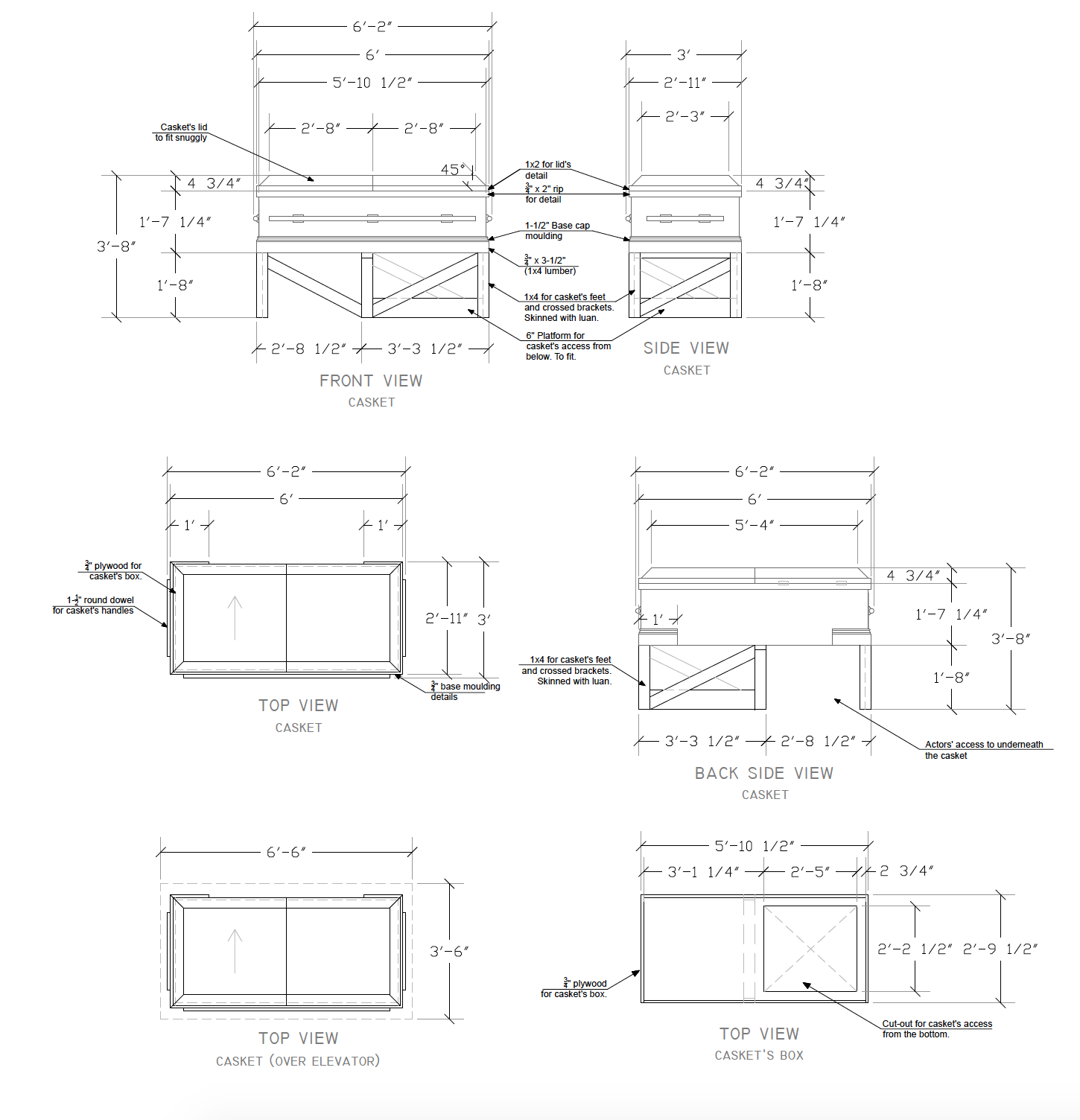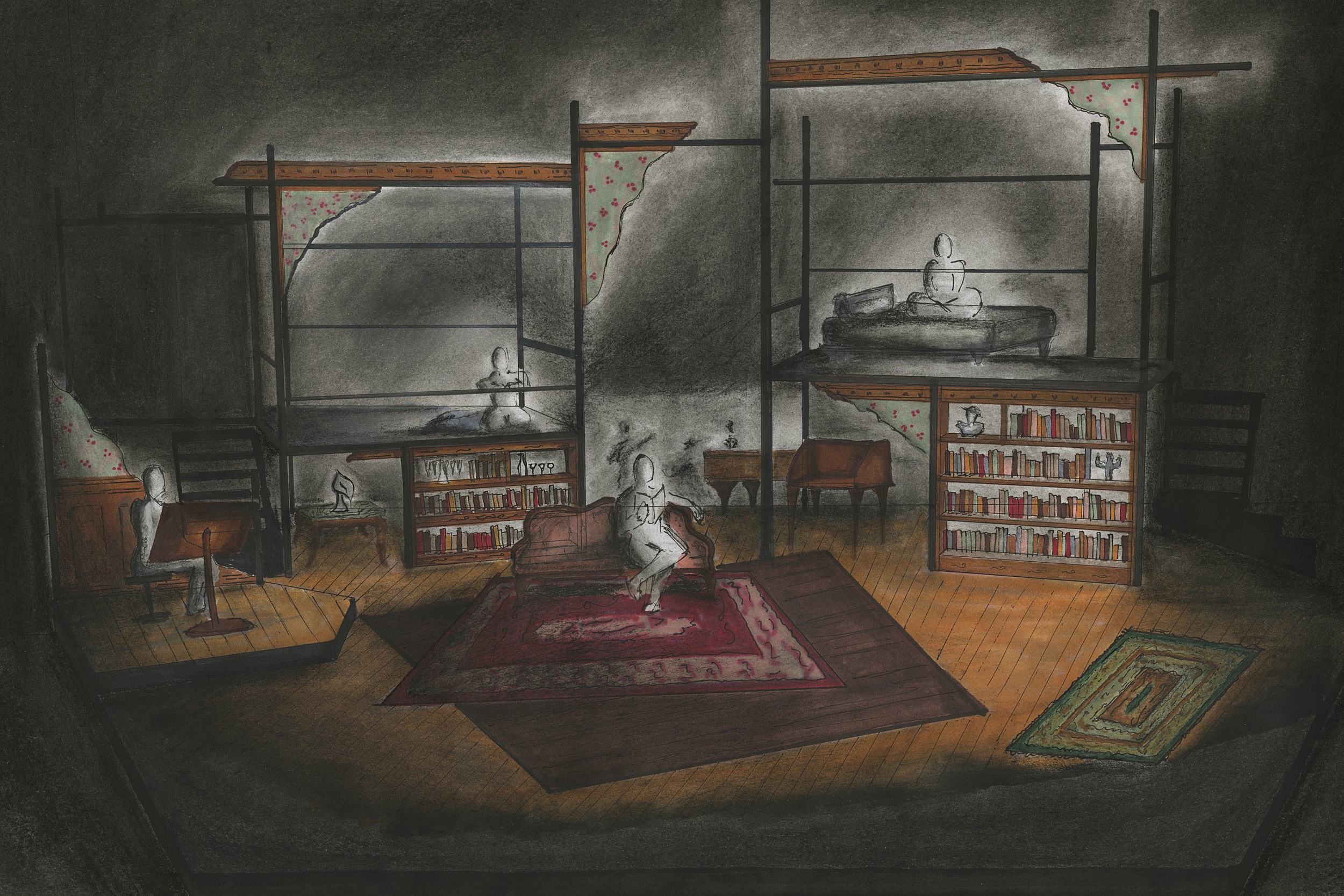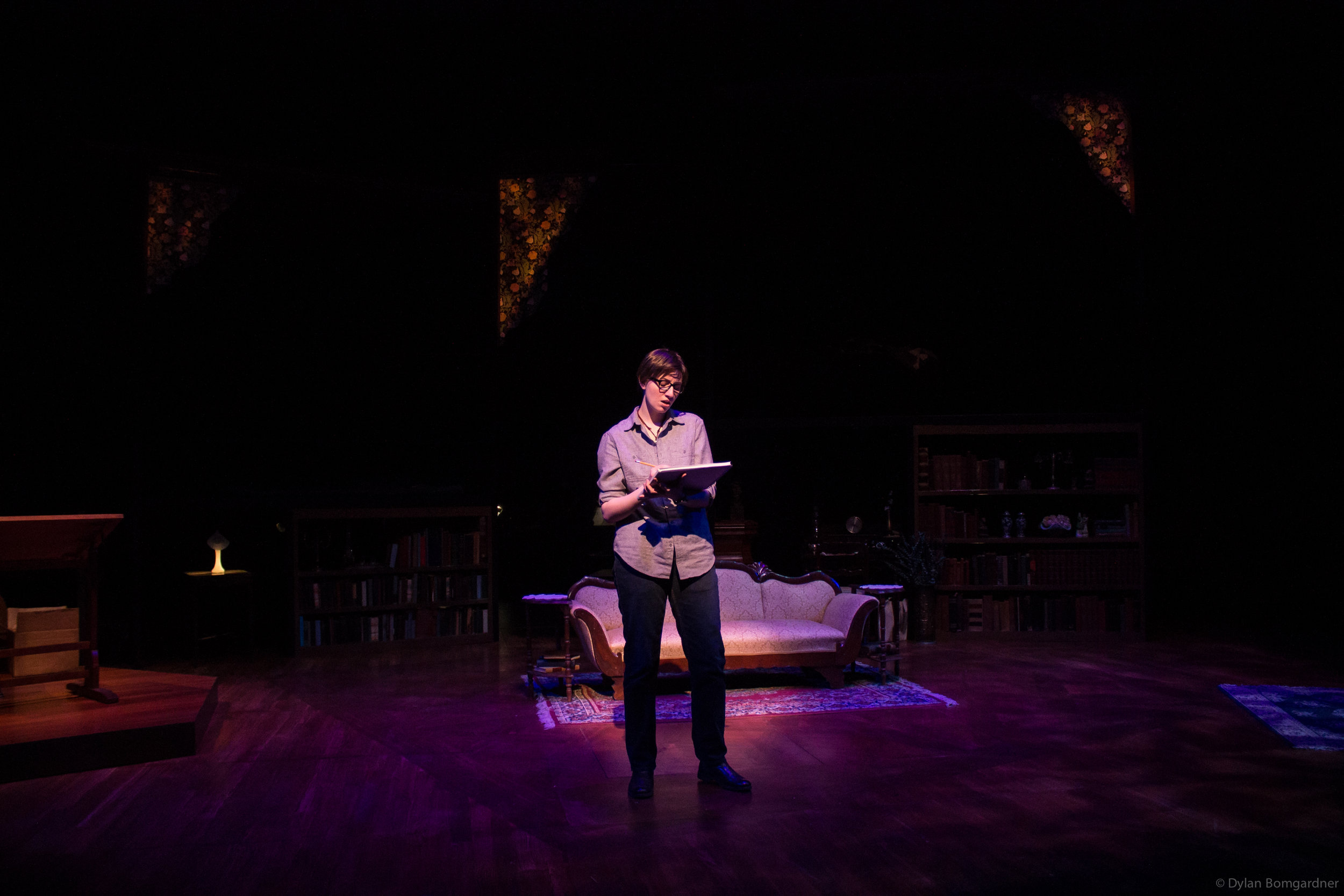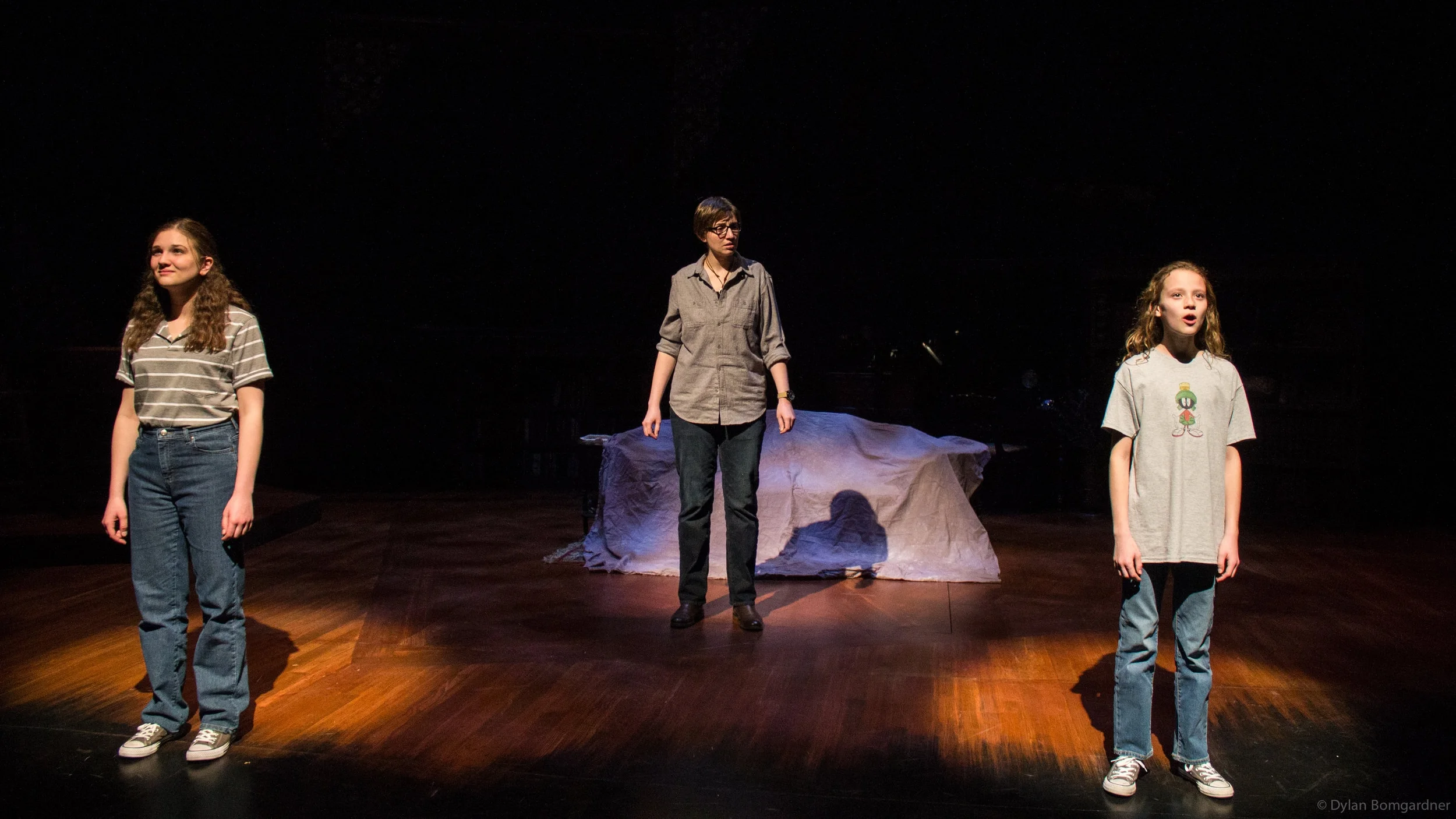


























*Theatrical Design Excellence Award in Scenic Design The Kennedy Center American College Theatre Festival- Region Two Festival 51, Montclair State University 2019.*
A musical, adapted by Lisa Kron and Jeanine Tesori, from Alison Bechdel's graphic novel of the same name. Studio Theatre, Virginia Tech, Spring 2018.
A memory play where Alison Bechdel, now a cartoon artist in her forties, goes back into key moments of her life, to try to understand and come to terms with her father. A story of self-discovery, identity, and family.
Directed by Susanna Rinehart
Music Director: Bryson Baumgartel
Stage Management by Allison Hopfer
Lighting Design by Dylan Bomgardner
Costume Design by Mary Rathell
Props design by Felysia Havens-Furnary
Technical Direction by Chris Russo
Master Electrician: Joe Fry
Choreographed by J. Clayton Winters
Charge Artist: Rhi Sanders
Scenic Art by Stefnie Cerny & myself.
Actors on stage: Caroline Silas, Kirstin Wolf, Kevin Foster, Catherine McMullan, Henry Fox Mason, Jackson Tindall, Amanda Christian and the child actors Sylvia Macnab, Kylan & Beckett Socha.
"A family tragicomic"- Alison Bechdel.
Photo by Dylan Bomgardner

Two main areas were elevated in platforms on stage: the Dorm Room, and the Apartment in N.Y. This also creates the opportunity to use the space below them for the composition of main location in the play: the interior of the house in Maple Ave. A 6"-high level on SR is created for Alison Bechdel's senior character, a location flexible enough for her to have access to every other area on stage.
Transforming the interior of the house in Maple Ave. into the Funeral "Fun" Home was possible with an elevator on stage center, used would bring in the casket. That same elevator brings in a car bench on later scenes of the play.
All plates were drafted in Autocad.

Honoring not only the script, but Alison Bechdel's graphic novel was a keystone for the design.
From it's conception, the set was design to feel and function like a graphic novel, allowing multiple actions at different locations and times to happen simultaneously; framing the performers . The vertical and horizontal elements in each platform suggest a sort of paneling, supporting this whole concept.

A painted deck, recreating two types of wood flooring, became a huge element for the interior design of Bruce Bechdel's Victorian restoration house in Maple Ave.
The theatricality here is the vignette-to-black on the edges of the deck; making it, again, a fragment of memory in Alison's remembrance.

To allow the three Bechdel kids to pop out from the casket (all at once), a fake bottom was design to allow them to hide below it and then climb inside, appearing from within in front of their very angry father.

The frames not only create a graphic novel-like paneling, but they also allow to include in their first plane some Victorian style details for the interior of the House in Maple Ave.
Crown moulding, replicas of William-Morris wallpaper, wainscoting... these elements are not just pure decoration, but a sample of Bruce’s obsession with beauty and historical accuracy. None of these details are finished pieces, though. They are fragments of a bigger picture. Pieces in Alison Bechdel's memory.

A quick but key moment in the play happens outside Oberlin College's Gay Union.
On set, a hinged door appears from SL as a portal of discovery to Alison's identity.